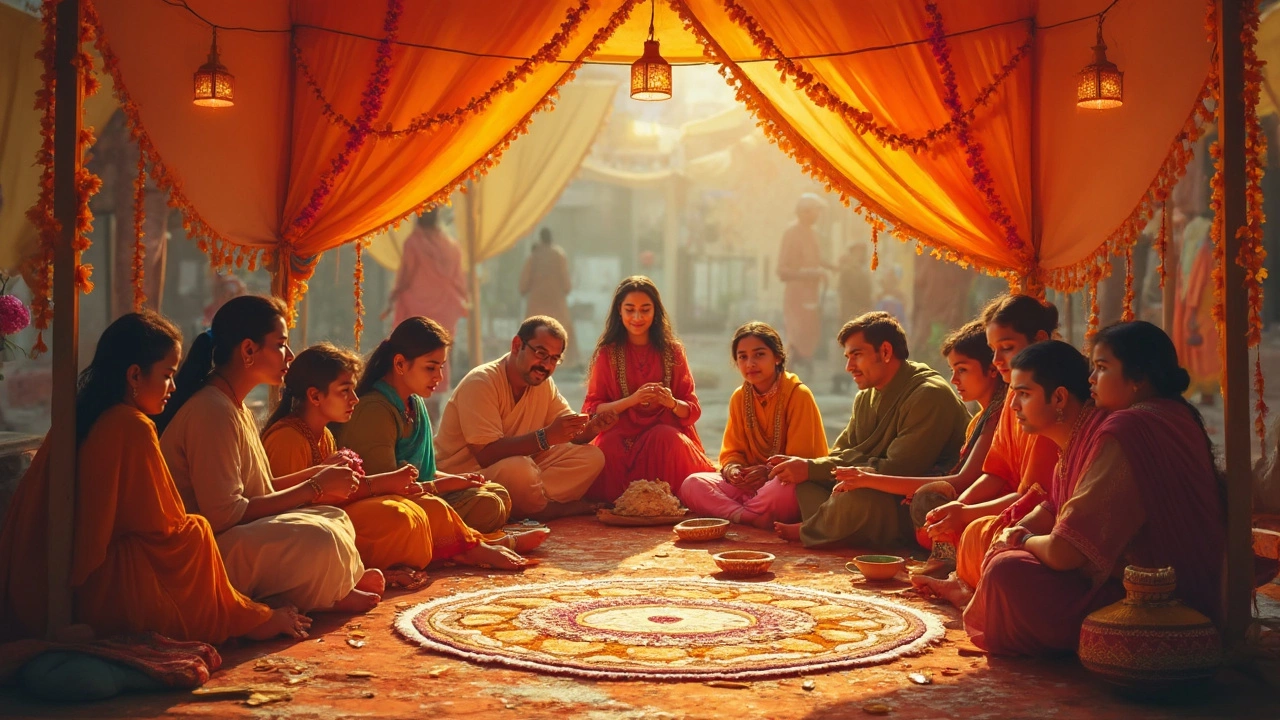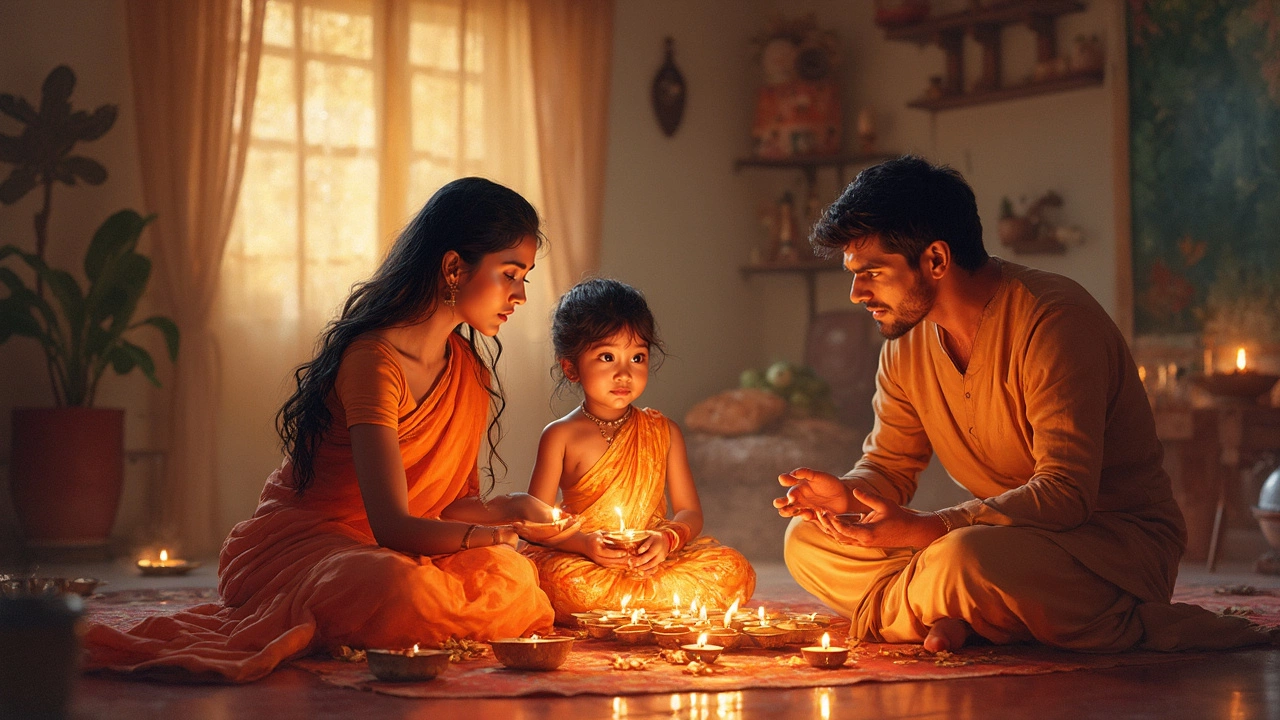Are Birthdays Important in India?
 Mar, 28 2025
Mar, 28 2025
Ever wonder why birthdays are such a big deal in India? It's not just about the cake and candles—it's a mix of culture, tradition, and a little modern flair. In this vibrant country, a birthday isn't just a personal milestone; it's often seen as a community event where family, friends, and even neighbors participate in the celebration.
One of the first things you'll notice is the blend of traditional customs with Western influences. Traditionally, some families might begin the day with a small puja (prayer) to seek blessings for the year ahead. Meanwhile, modern parties often feature balloons, music, and sometimes even themed decorations that wouldn't look out of place anywhere else in the world.
- Cultural Significance of Birthdays in India
- Traditional and Modern Celebrations
- Regional Birthday Customs
- Tips for Planning a Birthday in India
Cultural Significance of Birthdays in India
In India, a birthday is much more than a personal celebration; it’s deeply rooted in cultural and sometimes religious traditions. It's an opportunity to connect with loved ones and often includes blessings from elders to ensure prosperity and health for the year ahead. Traditionally, the day might start with a visit to a temple where the birthday person seeks divine blessings. This spiritual start is a common practice for many families across the country.
Many families believe that starting a birthday with a small puja at home brings good luck. It's not unusual to see friends and family gathering early in the morning to offer prayers and perform rituals that are specific to their community and region. These rituals can vary widely, such as offering sweets to deities, lighting a lamp, or adorning the birthday person with flower garlands.
Another fascinating aspect is how these celebrations often represent the diversity of Indian culture. In rural regions, birthdays might be marked with community feasts, where entire villages come together to prepare meals and share in the joy. In contrast, urban settings might see a shift towards more private affairs with close-knit gatherings or extravagant parties that blend Western and Indian traditions.
A fun fact is that in India, the significance of age milestones varies. For instance, in some communities, the first birthday is celebrated with elaborate rituals because it's believed to ward off evil spirits. Additionally, the 60th birthday of a parent is often celebrated as a significant event, marking the transition into a respected elder.
Finally, celebration styles can be dramatically different across regions. In some parts of South India, for example, there's a quaint tradition of breaking coconuts to mark the occasion, symbolizing new beginnings and the casting away of the past year's negativity. No matter how it's done, the essence remains the same—a heartfelt celebration of life, culture, and community.
Traditional and Modern Celebrations
In India, birthdays are a fascinating blend of old traditions and new customs. This mix makes celebrations unique and exciting. Traditionally, many Indian families start the day with religious rituals. A small puja or prayer is common to invoke blessings for the year ahead, focusing on health, prosperity, and success.
This spiritual start is often followed by more conventional rituals like wearing new clothes and preparing special meals. The birthday person might also visit a temple with family to make offerings. When it comes to food, traditional sweets like gulab jamun or ladoo are often distributed to friends and neighbors as a gesture of goodwill.
But Indian celebrations have also evolved with the times. These days, many opt for modern parties, complete with decorations and party games. Western influences have brought cakes, balloons, and themed setups into the mix. It's not unusual to see children dressed as their favorite characters for themed birthday parties.
Party planners often customize events according to personal preferences. Gifts have become more varied, capturing both traditional and modern influences. While practical gifts are commonplace, personalized presents like customized photo frames or digital gadgets are gaining popularity.
Sometimes, these parties get quite detailed. A typical modern birthday celebration might include:
- Invitations sent out digitally through apps for convenience.
- Catered food services offering both traditional and international cuisines.
- Engagement activities, like magicians for kids or live music for adults.
- Return gifts for guests, commonly small tokens of appreciation.
Whether sticking to old customs or modern practices, the heart of an Indian birthday remains the same—bringing people together to share joy and well-wishes.

Regional Birthday Customs
India's diversity is reflected not only in its languages and foods but also in how birthdays are celebrated across different regions. Each part of the country has its own unique touch, making every birthday a colorful affair.
In the southern state of Kerala, birthdays often start with a visit to the local temple. It's all about receiving blessings from the God before any party begins. The family often prepares a special meal called 'sadya' which consists of a variety of vegetarian dishes served on a banana leaf.
Heading up north to Punjab, the vibe is more boisterous. Here, a birthday isn't complete without a lot of singing and dancing to the beats of bhangra. Gifts are exchanged, and families make it a point to cook up a feast, highlighting rich, spicy Punjabi dishes.
In Maharashtra, especially in Mumbai, birthdays can be quite modern, with parties in restaurants or homes. However, many families also conduct a ritual called "Arti," where a platter with a lamp is circulated around the birthday person to ward off evil spirits.
Eastern India, particularly in West Bengal, cherishes the tradition of "Payesh," a sweet dish made of rice and milk, similar to rice pudding, which is an indispensable part of a Bengali birthday celebration.
A quick overview of how different regions add their own zing to birthday celebrations showcases India's diverse yet interconnected cultural landscape. Such customs highlight the importance placed on family, community, and tradition while celebrating personal milestones.
Tips for Planning a Birthday in India
Planning a birthday can be a fun yet challenging experience, especially in a place as diverse as India. Whether it's a kid's party or an adult's celebration, it's worth infusing some local flavor. To get started, decide on the type of celebration you're aiming for—are you thinking about a traditional gathering or an all-out modern bash?
Once you're clear on the theme, here's a handy list to ensure everything goes smoothly:
- Guest List: Invite close friends and family, but don't forget that Indian parties often see extended family and friends as must-invites. Be prepared for a few unexpected guests too!
- Venue: Based on your guest count, choose a spot. Many prefer their home for a personal touch, while others might book a community hall or a restaurant for larger gatherings.
- Food: Decide on the menu, keeping in mind the preferences of your guests. A mix of traditional dishes like samosas or biryanis and a few Western items like pizza or pasta can please everyone's palate.
- Decorations: Sure, balloons and streamers are classic, but consider adding some Indian elements like marigold flowers or vibrant rangoli designs to the mix.
- Entertainment: Depending on the age group, plan some games or a playlist. Renting a DJ or setting up a karaoke machine could be a hit, especially among younger crowds.
- Return Gifts: These are a thoughtful gesture. It could be as simple as a pack of sweets or a small craft item that holds cultural significance.
If you're feeling a bit overwhelmed, remember: in India, people often seek help from event planners, especially for bigger events. The key is to stay flexible and remember that it's all about creating joyous memories.